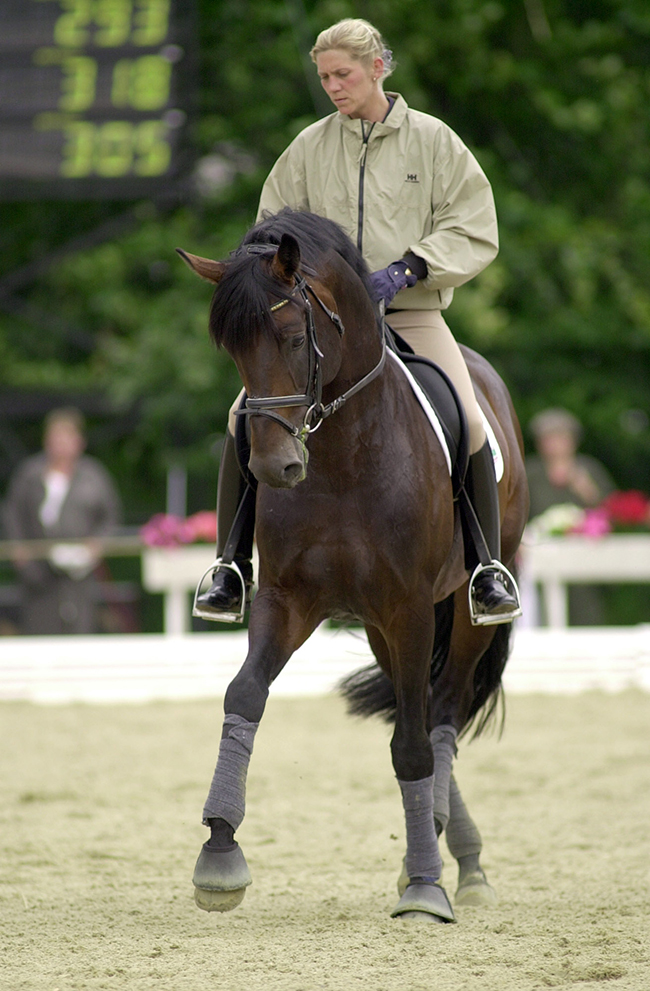 All Martina Hannöver’s horses have lovely half passes, so it is no surprise to find that while she was working under the late Herbert Rehbein at Grönwholdhof, he declared that she was so good at it that she could ‘train a cow’ to half pass…
All Martina Hannöver’s horses have lovely half passes, so it is no surprise to find that while she was working under the late Herbert Rehbein at Grönwholdhof, he declared that she was so good at it that she could ‘train a cow’ to half pass…
What is important about training a horse to half pass?
“The most important thing when you start training the basics is that the horse listens to you. Listens to the leg, and listens to the half halts, that you just have to think and the horse stays with you. That when you come with your leg, the horse doesn’t go up with its head, against the hand – they stay there. You have to make sure that the pressure is not too much, you have to make a good balance between pressure and half halts.”
“With my younger horses I always start doing half pass and shoulder in, without bending the horse, so that the horse just listens to my leg. The most important thing with a young horse, is to develop the muscles of both hind legs, the same. You have to teach them so they go with the hind legs, right where the front legs are, in a straight line. No horse is born straight, you have to work on it all through their lives, so you have to ride shoulder-in and half passes.”
“I start with shoulder-in feel with my young horses so they learn to go straight, and they can work the muscles on both sides, the same, that’s very important. If you don’t do this, then the muscles will be different. If the horse moves with the hind leg beside the front leg, that is a big problem.”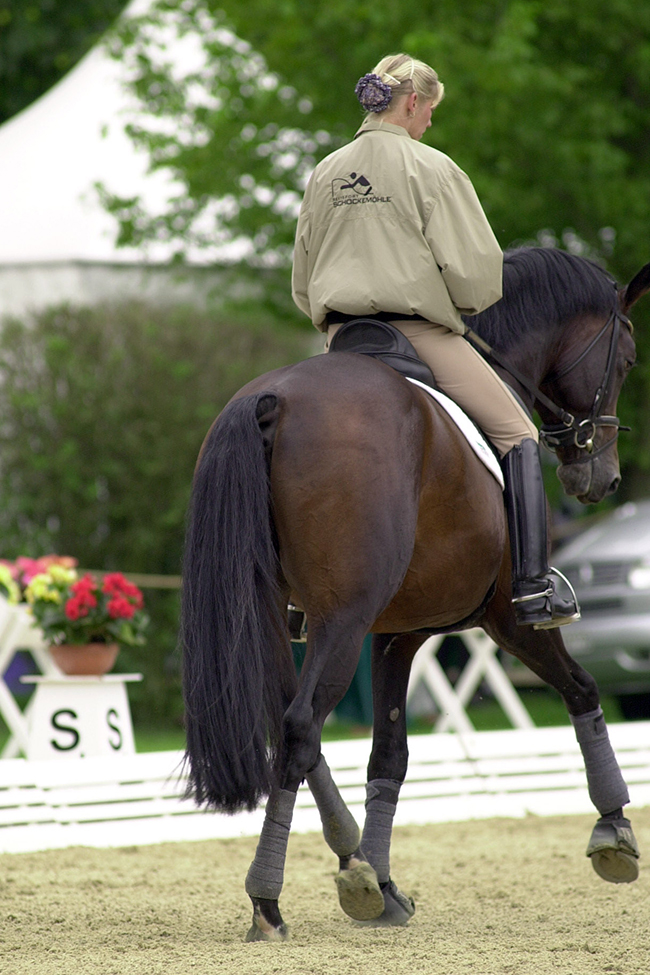
“When the horse is four, then I ask for half pass, but without bend. Some learn it easy – like all the Rubinsteins. I always ask in a normal working trot so that the muscles in the back can develop. It depends on the horse when I start to ask for the bend – training always depends on the horse, when they feel very good and easy in the hand, and you can push them and they stay on your seat, when you can give them the reins in a half pass, you shouldn’t have to pull them over, always on the outside rein, they have to follow the outside rein, then they can go over very easy… and when they do all that, you can ask for the bend. You can go in the half pass, three or four metres, then make a circle, then again the half pass. Or when they come over too much with the hind legs, you can go to shoulder-in to get them straight again, the horse always has to listen to you, it should never get in front of your aids – then it will always be super to ride.”
“It is always difficult on the centre line and the diagonal to keep them straight, but when they follow your legs, you can help them. You know how little kids have bikes with trainer wheels, we have to try to help the young horses with our legs, like they were trainer wheels.”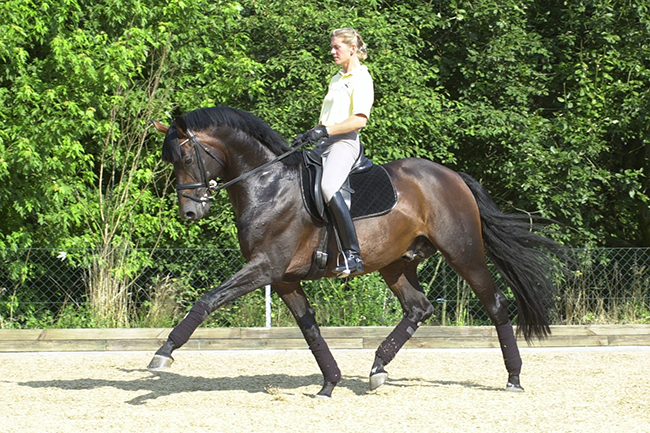
When you have a finished horse – do you have to keep riding on the inside leg to keep the bend?
“I ask for the bend in the corner, and it should stay. Then in the half pass you get the horse over with outside rein and outside leg, and the inside leg makes the inside front leg of the horse, bigger, and keeps him active. He should stay in front of me, on my inside leg.”
If the horse starts to put its quarters in front of its shoulders?
“Then I do a little bit of half pass/shoulder-in, always when I do the half pass, the mother of the exercise is shoulder-in. Always correct the horse in shoulder-in. The bending, I correct with circles between the half passes, not in the half pass.”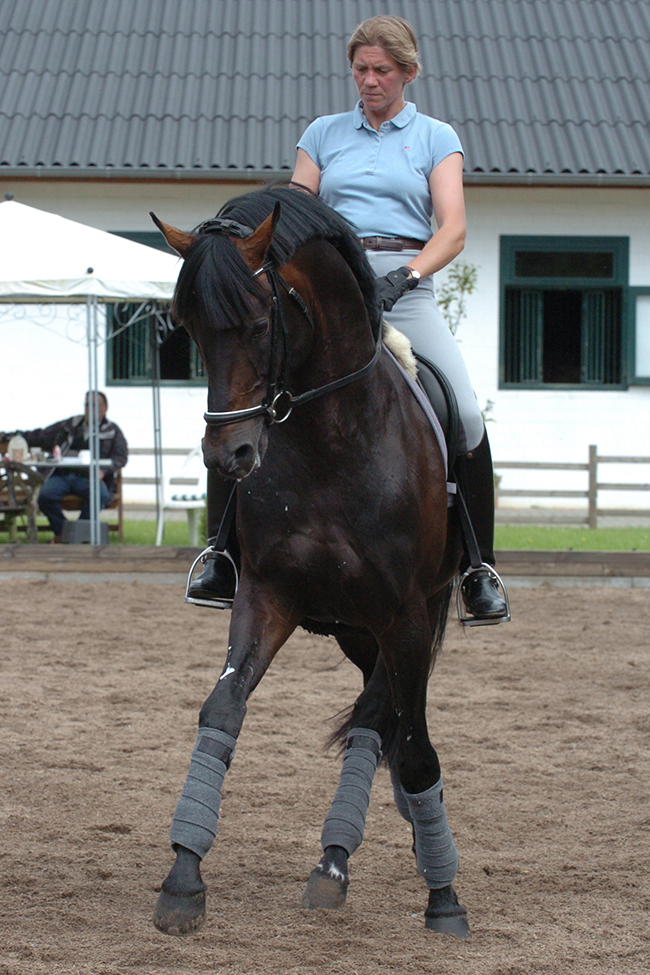
If the horse starts to lead with the shoulders in front to the quarters?
“Then there is not enough outside rein and outside leg. So you need a few more half halts. Some horses are good to the left and bad to the right, or the other way round, and so you don’t always give the same aids to left and to right. You have to feel how the horse is, and how it listens. Some horses listen much better to the left, then you have to be a little softer to one side, and stronger to the other.”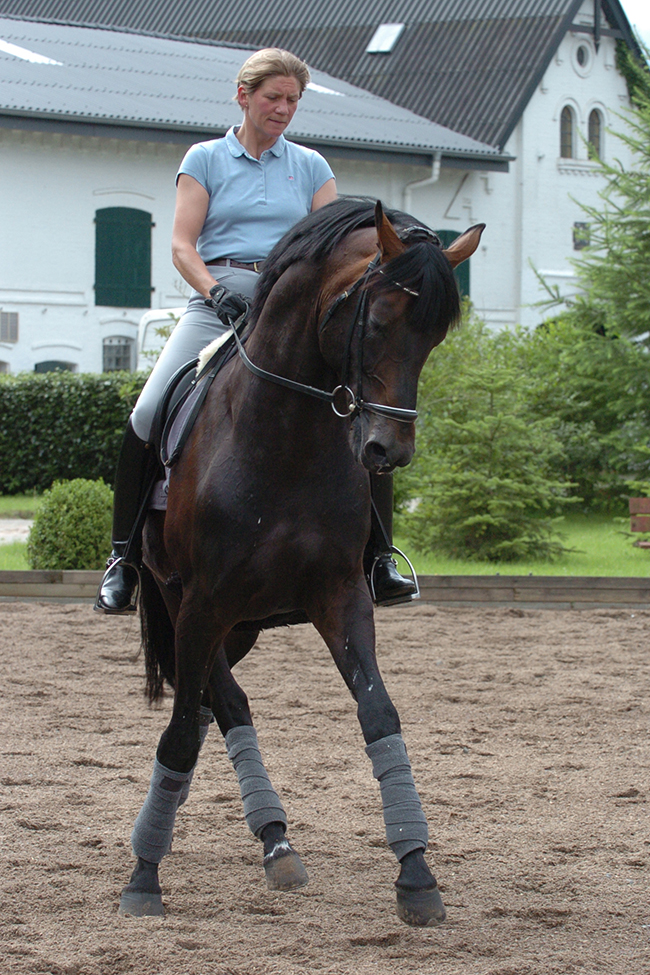
“They have to be soft in the neck so you can bend them. When I train or correct the young horses, I put them really round, then it is easier for them in the back. A one hundred metre runner doesn’t just come out of his house and run one hundred metres, he is gymnastically conditioning himself, and that is what I am doing with the horse. Sometimes I just ask for one good half pass, soft and listening, then back to the gymnastics.”
“When they are young, you just straighten them for a stride before taking the new bend, but when they are older, they should, with the slow bending to the other side, be straight for a moment, then they go over right away, that’s when you can count your points.”
“The horses are so intelligent, that when you are training the zig zag half passes in canter, you have to concentrate and really listen to what the horse is thinking, because those Grand Prix horses, they really know the zig zag in the test – three, six, six, six, three – you have to be careful with your inside leg, and keep your outside leg on the horse because otherwise they change before you ask. It’s very interesting to ride half pass, l enjoy it. But really, I have never tried to train a cow.”
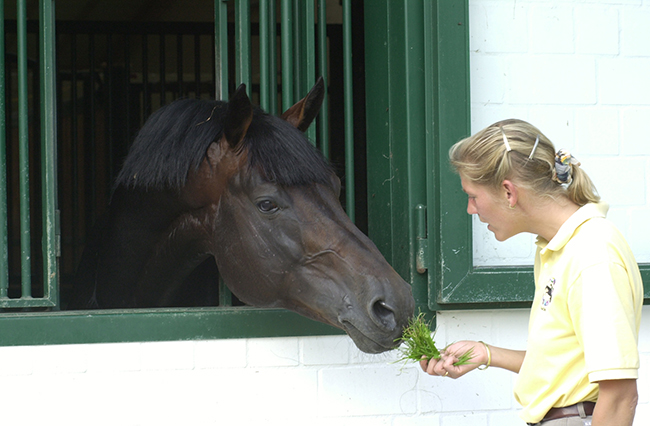
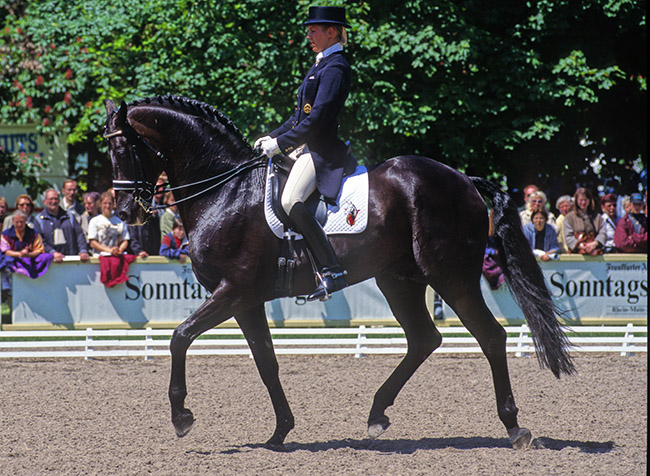
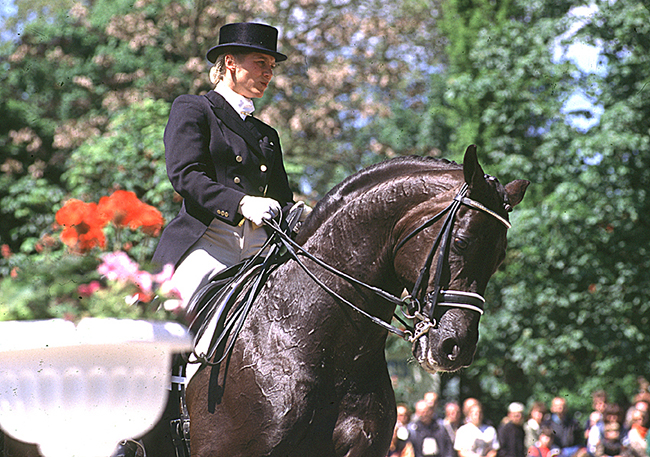 Together they became famous – Martina and Rubinstein
Together they became famous – Martina and Rubinstein
This article first appeared in the January 2001 issue of THM.



Incredible article – of all your input and clarity my favourite sentence is your last one : it puts high level riding into perspective. Thank you so much.
Georgina.